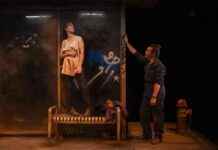Art or vandalism? It’s the dilemma that always surrounds graffiti. Some people defend them by all means, starting with the creators. Others, on the other hand, hate them to death.
Those who detest them are almost always referring to the worthless scribbles that appear out of the blue anywhere in cities, whether on walls or blinds or socks. Misdeeds that only employ the cleaning services of the councils.
But, then, there is another kind of graffiti, the beautiful ones, the ones with a high aesthetic value. These are no longer vandalism: they are genuine works of art. They are usually painted by professional graffiti artists, although also amateurs with great design skills. They are drawings that the authorities take care of; works that respect urban furniture and that appeal even to those who hate it.
This kind of urban art works beautify previously degraded or charmless spaces, which is why councils even usually reserve large walls for graffiti artists to create the works.
Great walls such as those of Staro Zhelezare, a small village located in a remote area of ??the interior of Bulgaria. Walls that serve as a blank canvas for street art artists. In fact, despite having only 400 inhabitants, the town has become famous for its walls covered in graffiti.
But if there is one thing that attracts attention in the Bulgarian town, it is the theme of the graffiti: portraits of political and cultural figures. Graffiti that turns Staro Zhelezare into an open-air celebrity museum.
You can see politicians like Donald Trump talking to a cow or being towed by a tractor, Joe Biden’s face designed in the style of Andy Warhol, Putin and Zelenski facing Kung Fu Panda or Gargamel talking with Boris Johnson. But there are also characters from the world of culture and sport, such as The Simpsons, The Little Prince, Jack Sparrow, Marilyn Monroe, Amy Winehouse, Freddie Mercury, John Lennon, Charles Chaplin, Groucho Marx, Mr. Bean, Albert Einstein or Maradona.
In addition, for a few years now, the portraits of the personalities have been combined with paintings of the townspeople. So Angela Merkel interacts with a grandmother or Barack Obama chats with another neighbor sitting on a bench.
The street art project began more than a decade ago as an initiative of Polish-Bulgarian artists Katarzyna and Ventsislav Piriankov, helped by students from the Polish city of Poznan. As they explain, with the project they wanted to “use the village as a canvas and transform it into a work of art”. The aim was and continues to be to give life to this locality, especially at a time when the elderly are retiring and many of the young are migrating to the cities in search of opportunities.
The initiative took off in 2013. Since then, every summer an outdoor exhibition has been held where you can see photographs of all the works of art in the village. The temporary exhibition, together with all the permanent graffiti that spreads throughout the town, means that Staro Zhelezare has earned the qualification of “Eastern Europe’s most famous street art village”.
The slogan is deserved. The truth is that the type of buildings in the town also helps. They are constructions from the Thracian period, formed by large walls oriented towards the outside, since the windows are oriented towards an interior courtyard. A peculiarity that allows graffiti artists to enjoy large surfaces available to paint the works.
Staro Zhelezare welcomes more and more graffiti artists who come from more parts of the world. In addition, the town receives sponsorships from various national and international institutions. In 2018, MoMa in New York launched its first rural branch in the Bulgarian village. At the exhibition, the best works of the New York museum could be seen in the form of outdoor murals. Who would have told this remote town in central Bulgaria.








